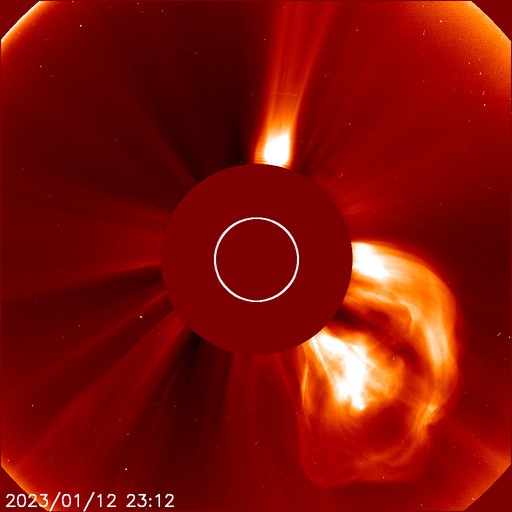Updates can be found by scrolling down to the end of this newsitem.
10 January - X1.0 flare by NOAA 3186
Following the X1.2 flare by NOAA 3182 on 6 January and the X1.9 flare by NOAA 3184 on 9 January, the Sun has produced yet another X-class flare by yet another sunspot region. On 10 January peaking at 22:47 UTC, NOAA 3186 produced a short-lived X1.0 flare (optical class 2B). The STCE's SWx Classification page contains more information on these flare classifications. NOAA 3186 is a rather small sunspot region currently located near the northeast solar limb (see SDO/HMI image and magnetogram underneath) , but seems to have some magnetic polarity mixing in its leading portion and was responsible for a number of M-class flares during the last 2 days. The X-class flare had a short duration of only 13 minutes, and no enhancement in the proton flux was observed.
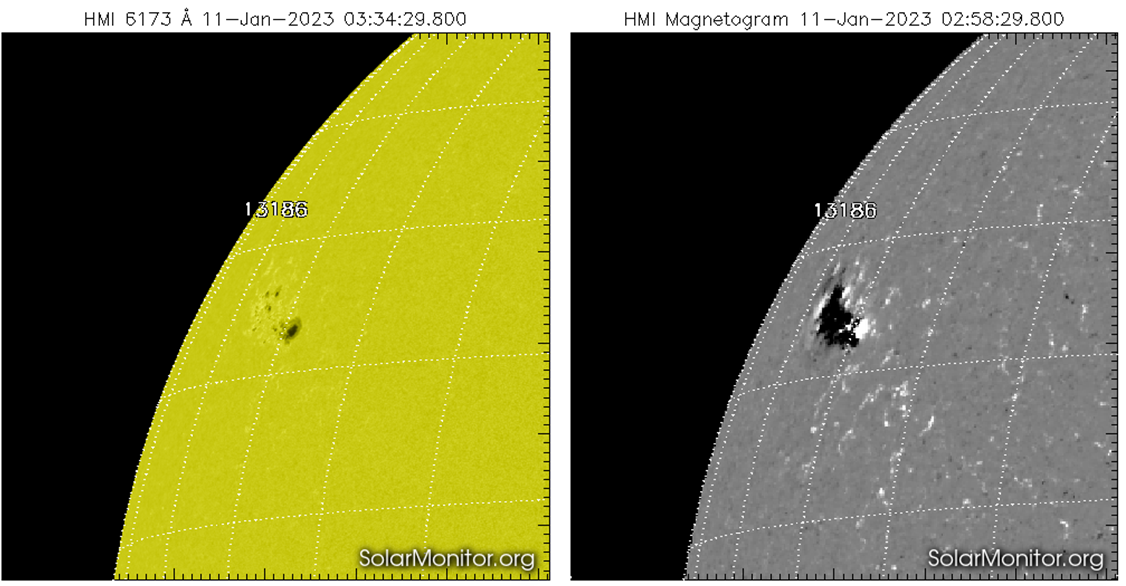
Radio observations (NOAA) indicated that there was an associated Tenflare, i.e. a doubling (or more) of the radio emission at 2800 MHz compared to pre-flare values, with the solar radio flux up 320 sfu. Enhanced radio emissions were observed at all frequencies (such as 0.6, 5 and 8.8 GHz) observed by the Radio Solar Telescope Network (RSTN) from the United States Air Force. Again, the radio spectrograms showed the absence of a Type II burst. However, extreme ultraviolet (EUV) imagery by SDO/AIA 193 and PROBA2/SWAP shows material was ejected, though most flowed back to the solar surface. Coronagraphic images (SOHO, CACTus) show a narrow coronal mass ejection (CME) first visible at 23:24 UTC, indicating that at least part of the ejected material escaped from the blast site (or this is a farside CME that by coincidence just happens to be in the same line-of-sight). The observed CME certainly does not have an earth-directed component.
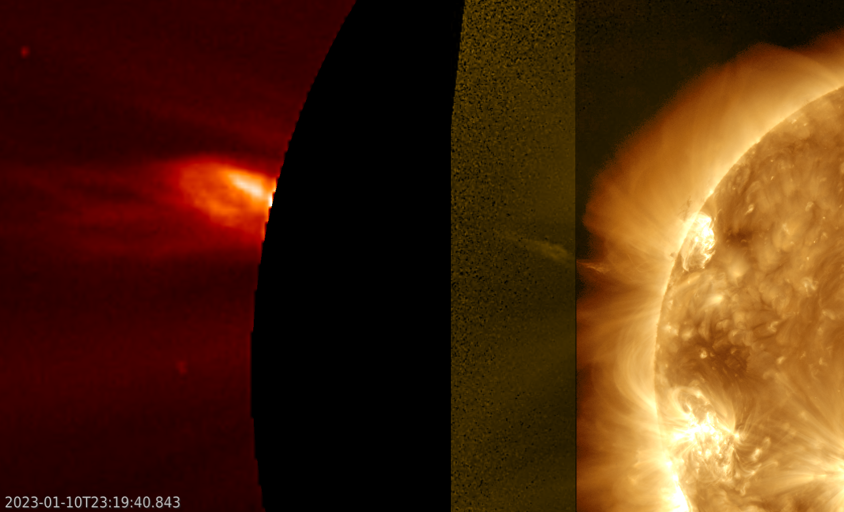
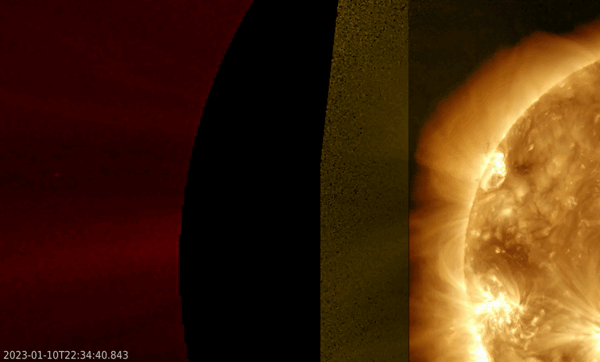
Image compilation of SOHO/LASCO C2 coronagraphic images, and EUV PROBA2/SWAP and SDO/AIA 193 images showing the CME, and the mass portion returning to the solar surface. The clip also show the flare in active region NOAA 3182
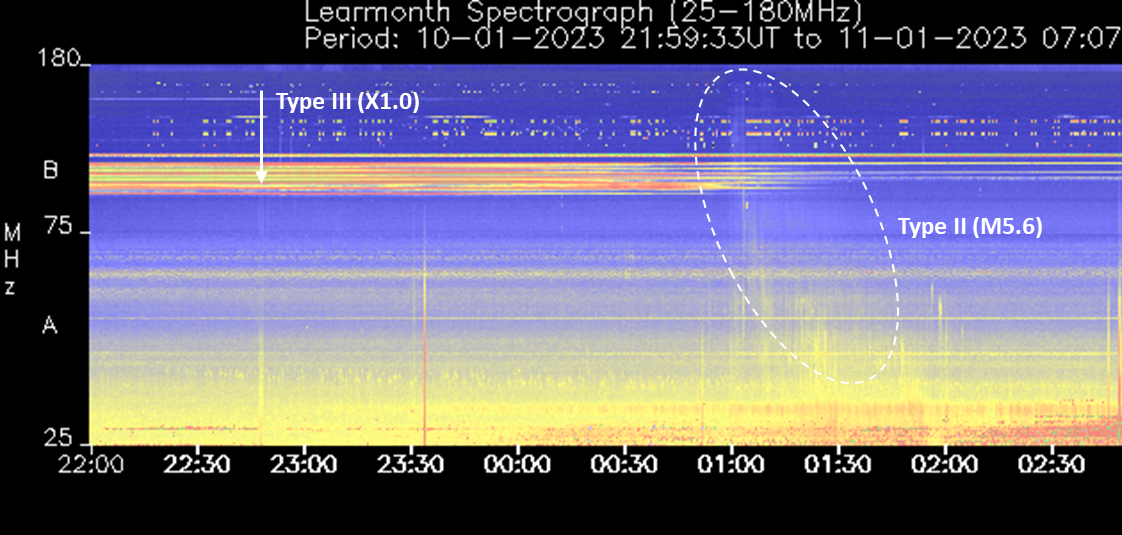
Annotated radio spectrogram from Learmonth showing the Type III radio burst associated with the X1 flare, as well as a faint Type II burst associated with the M5.6 flare produced by NOAA 3184. Standing-by further coronagraphic imagery to confirm any associated CME.
Space weather effects were limited to the usual disturbances in High Frequency communication, this time mostly over the Pacific. A magnetic crochet (more info) was observed in both the X1.0 flare as well as in a M5.6 flare that was produced by NOAA 3184 at 01:56 UTC on 11 January. The change in magnetic field strength was about 10 nT. The annotated imagery shows the evolution in the X-component of the magnetic field strength as observed at Learmonth (graphs from Intermagnet.
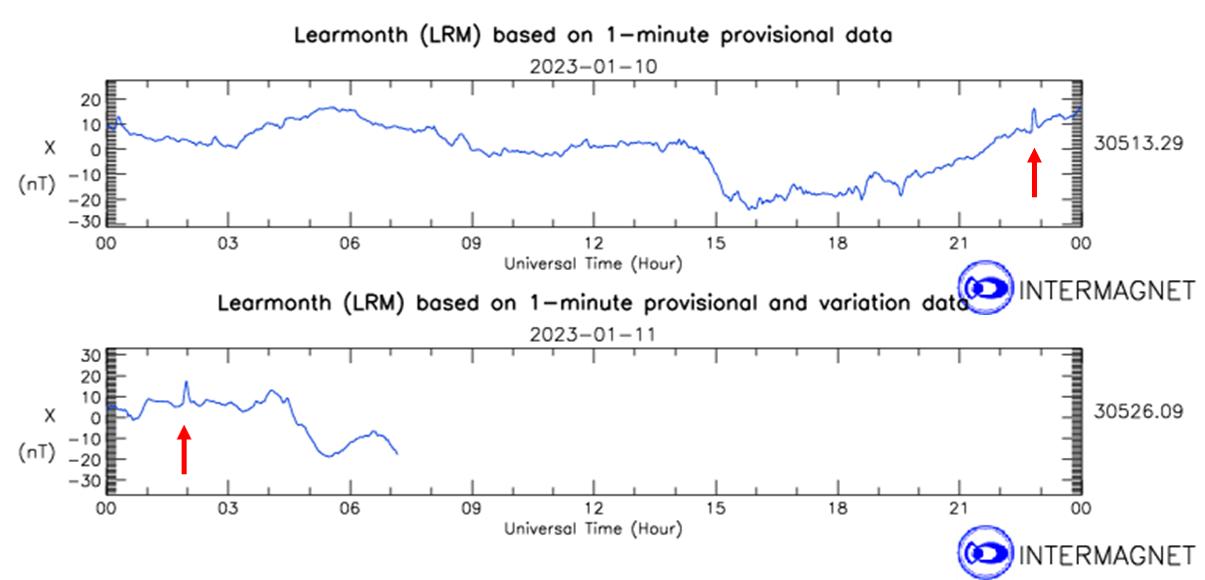
13 January - Proton enhancement from farside event
A proton enhancement was observed early on 13 January. A maximum of 4 pfu was reached at 03:40 UTC, thus remaining well below the event threshold of 10 pfu. There was no strong flaring going on prior to the start of the proton enhancement, but a gradual increase in the soft x-ray flux van be seen to start around 22:45 UTC and peaking around 08:50 UTC at the C8 level. The annotated graphs underneath show the evolution of the soft x-ray flux and the proton flux as observed by GOES.
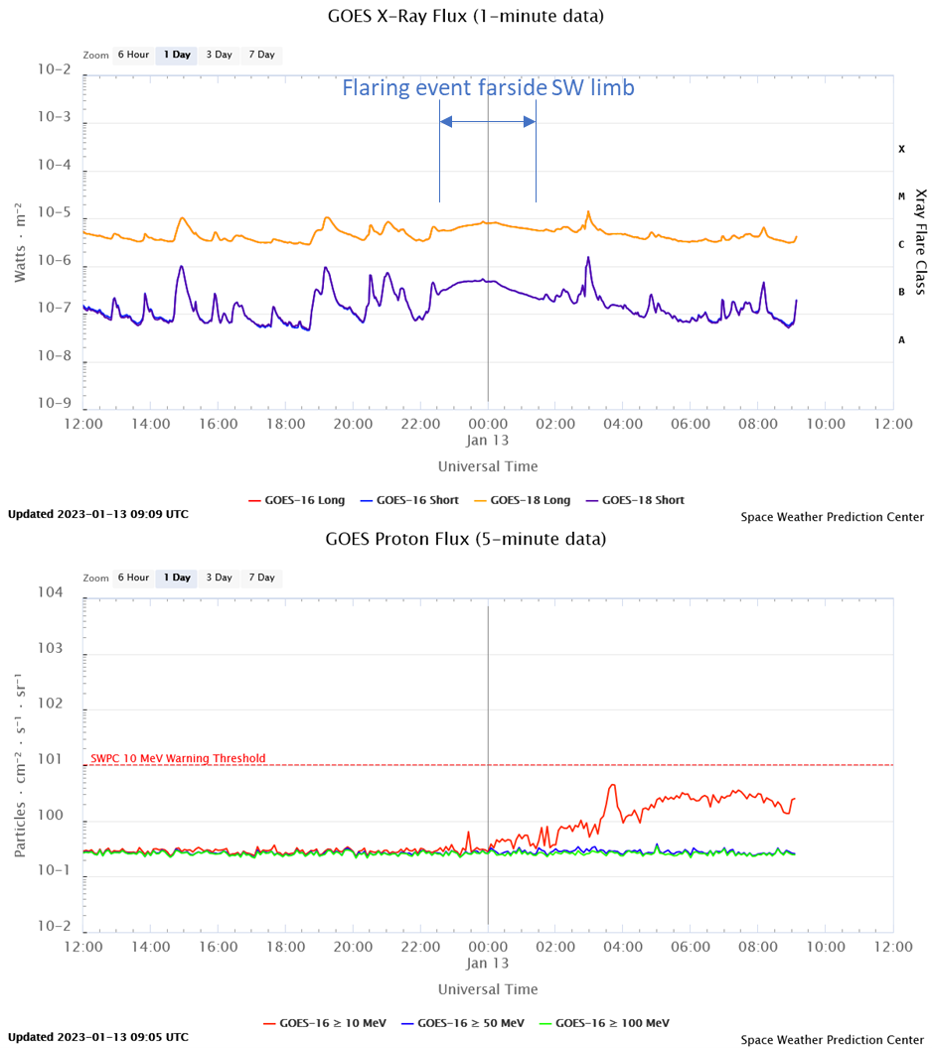
The source of this solar flare appears to be located behind the southwest solar limb, possibly active region NOAA 3183. In SDO/AIA 094 EUV imagery (see imagery underneath), activity in the upper solar atmosphere can be seen already starting around 18:30 UTC, with the first brightening at the limb starting around 22:45 UTC.
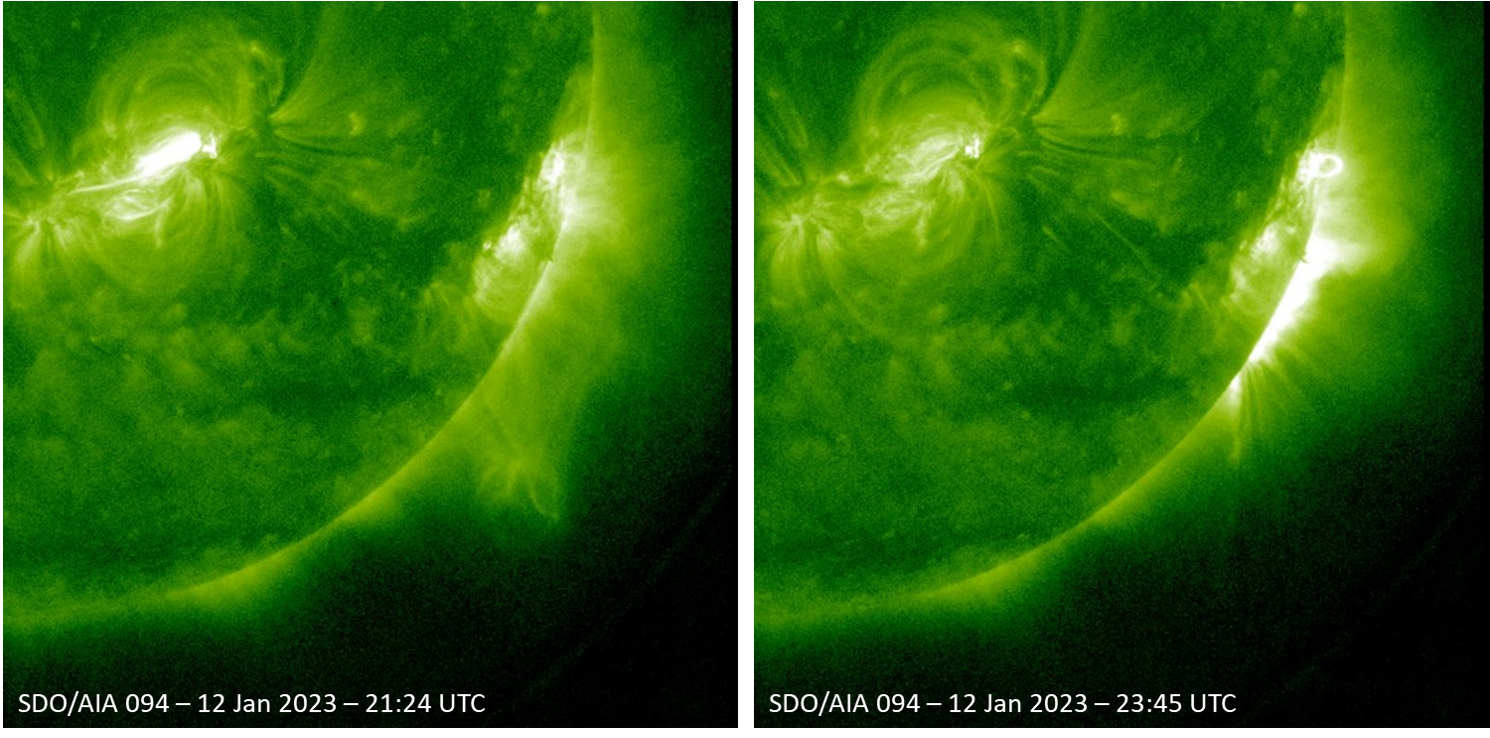

A fast CME was associated with this eruption. CACTus gave it a plane-of-the-sky speed of 1150 km/s. This CME is not directed to Earth. No important space weather effects are expected from the flaring, the proton enhancement, or the CME.
